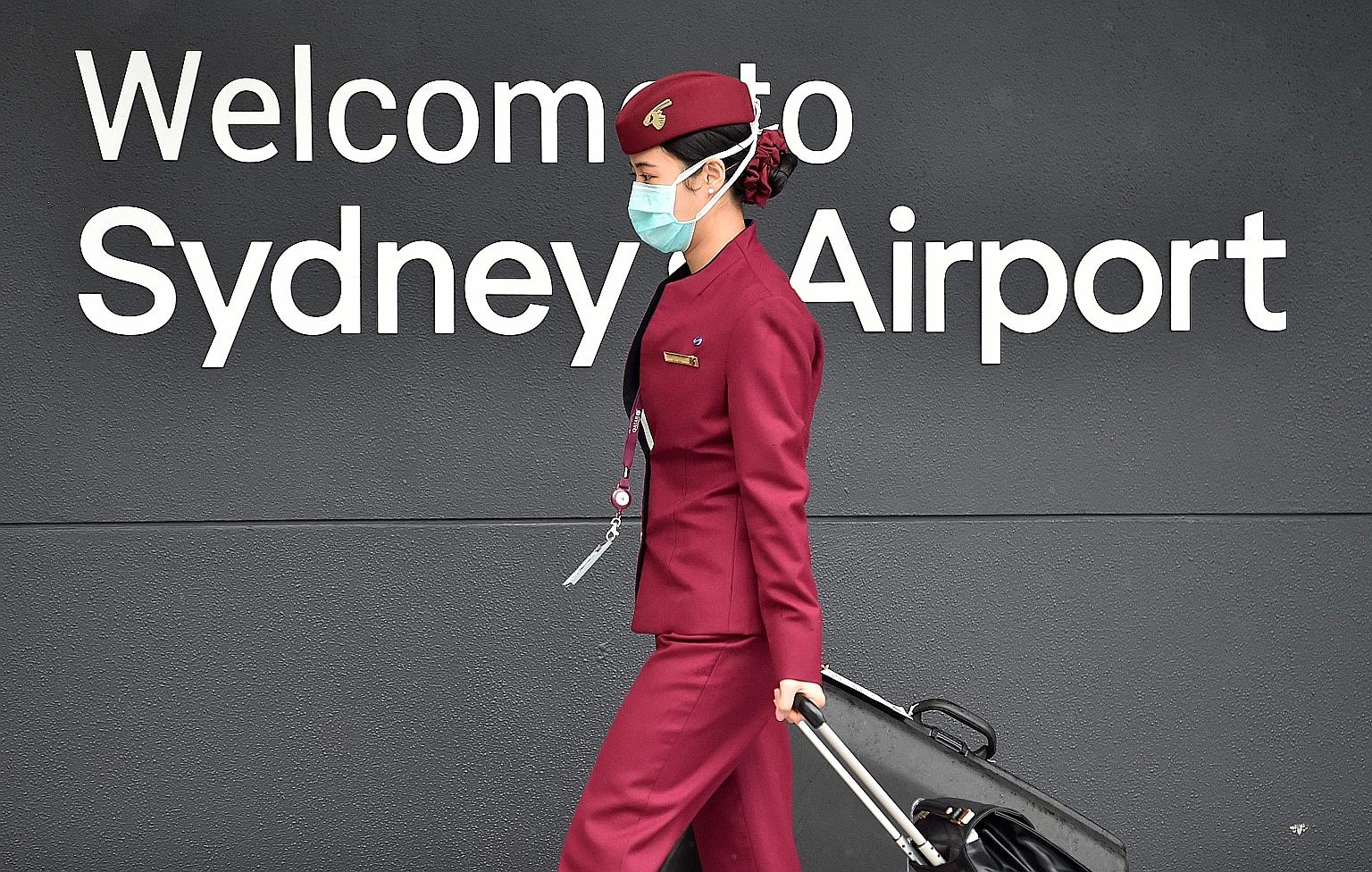A third of the world's air routes have been lost due to pandemic
Sign up now: Get ST's newsletters delivered to your inbox

Border closures, nationwide lockdowns and the fear of catching Covid-19 from fellow passengers have crippled commercial travel, with thousands of air connections disappearing completely.
PHOTO: AGENCE FRANCE-PRESSE
Follow topic:
SYDNEY • Before the coronavirus, a decades-long aviation boom spawned a network of nearly 50,000 air routes that traversed the world. In less than a year, the pandemic has wiped almost a third of them off the map.
Border closures, nationwide lockdowns and the fear of catching Covid-19 from fellow passengers have crippled commercial travel.
As thousands of domestic and international connections disappear completely from airline timetables, the world has suddenly stopped shrinking.
The crisis is unwinding a vast social and industrial overhaul that took place during half a century of air travel proliferation. In years to come, overseas business trips and holidays will likely mean more airport stopovers, longer journey times, and perhaps an additional mode of transport.
Even when an effective vaccine is found, the economic reality of the recovery may mean some non-stop flights are gone for good.
With borders effectively shut globally, the bulk of the world's dropped routes are inevitably cross-border. But thousands of domestic legs have also been axed, reflecting the pressure airlines face at home as they cut jobs and retire aircraft to find a cost base that reflects their shrunken situation.
In late January, 47,756 operational routes criss-crossed the world, more than half of them in the United States, Western Europe and North-east Asia, according to industry consultancy OAG Aviation Worldwide. By Nov 2, there were just 33,416 routes on global schedules, the data shows.
In Hervey Bay, a small tourist town on Australia's east coast, residents are mourning their last direct air connection with Sydney, the nation's main domestic and international gateway. The flight was one of eight regional routes scrapped by Virgin Australia after it collapsed in April under A$6.8 billion (S$6.65 billion) of debt.
"We're living in hope that they come back," said the regional council's deputy mayor Darren Everard, who is responsible for economic development in the area.
Among those hardest hit is a local manufacturer of truck body parts who relied on the flight to reach buyers in Sydney, he added.
GLOBAL MOBILITY
Hervey Bay, more than three hours' drive north of Queensland's state capital Brisbane, is best known as a jumping-off point for whale-watching tours and trips to nearby Fraser Island.
The town's Sydney flight is one of more than 14,000 connections that have been abandoned globally since the pandemic broke out, according to OAG.
Australia's capital, Canberra, has been scrubbed from international maps too. The city has no more direct flights overseas after Singapore Airlines ceased services from Singapore in September.
"It will take a good four or five years for connectivity to return to the same level we saw at the end of 2019," said Mr Subhas Menon, director-general of the Association of Asia-Pacific Airlines, which represents regional carriers, including Singapore Airlines and Cathay Pacific Airways. "Some of these routes may never be put back."
All this erodes aviation's financial clout. But it is the blow to airlines' contribution to global mobility and social opportunity that is harder to measure.
Before the pandemic, the industry supported 65.5 million jobs - more than half of them indirectly through tourism - and had a global economic impact of US$2.7 trillion (S$3.6 trillion), according to the 2019 Aviation Benefits Report, a study by industry groups including the International Civil Aviation Organisation.
FRAGILE MARGINS
To be sure, many airlines are adding routes at home to tap pent-up demand in what is effectively their only functioning market.
Commercial airline traffic in the US was back to more than half of pre-virus levels at the end of last month, according to data from flight tracking service FlightAware; in China, it has almost returned to regular levels.
And Singapore Airlines earlier this week restarted its non-stop service between Singapore and New York, the world's longest flight, as the country struggles to retain its relevance as a global aviation hub.
In Asia alone, 790 new routes are running this month that did not exist a year ago, according to aviation analytics firm Cirium. The eastern Chinese city of Yiwu in Zhejiang province, for instance, is scheduled to get 90 new direct flights from Beijing this month.
But far outnumbering these new connections are the 2,279 routes in Asia that are not operating any more. In November last year, there were more than 1,000 scheduled flights between Almaty and Nur-Sultan in Kazakhstan, the data show. This month, there is none.
In the US, American Airlines Group chief executive Doug Parker warned last month that parts of the country risk being cut off unless there is more support from the government. "There will absolutely be discontinuation of service to small communities, and there will be much less service to larger communities," he said in an Oct 8 interview on CNBC.
He said the airline has stopped flying to 13 US cities and extended those cuts until this month.
Routes with the most fragile profit margins will be the first to go, while airlines will try to keep the connections that feed passengers into larger travel hubs, said Mr Dirk-Maarten Molenaar, the Amsterdam-based head of Boston Consulting Group's travel and tourism practice for Europe, the Middle East and North Africa.
"For the next couple of years, there will be a number of super-thin routes you can't justify flying," he said.
BLOOMBERG

